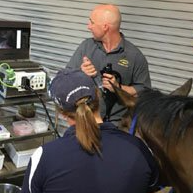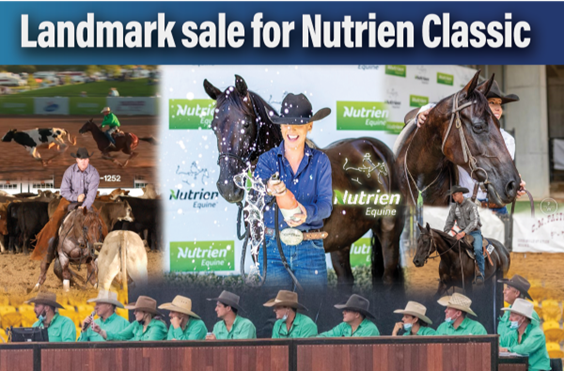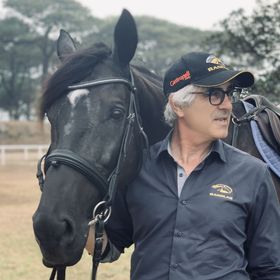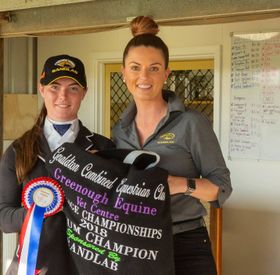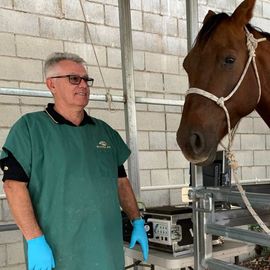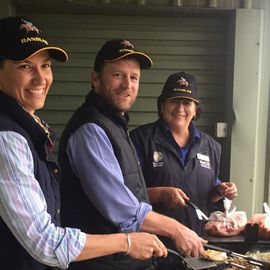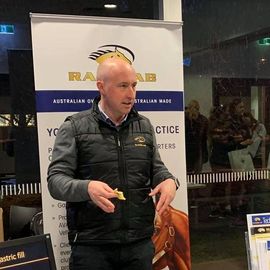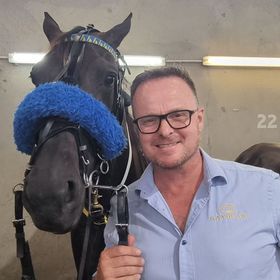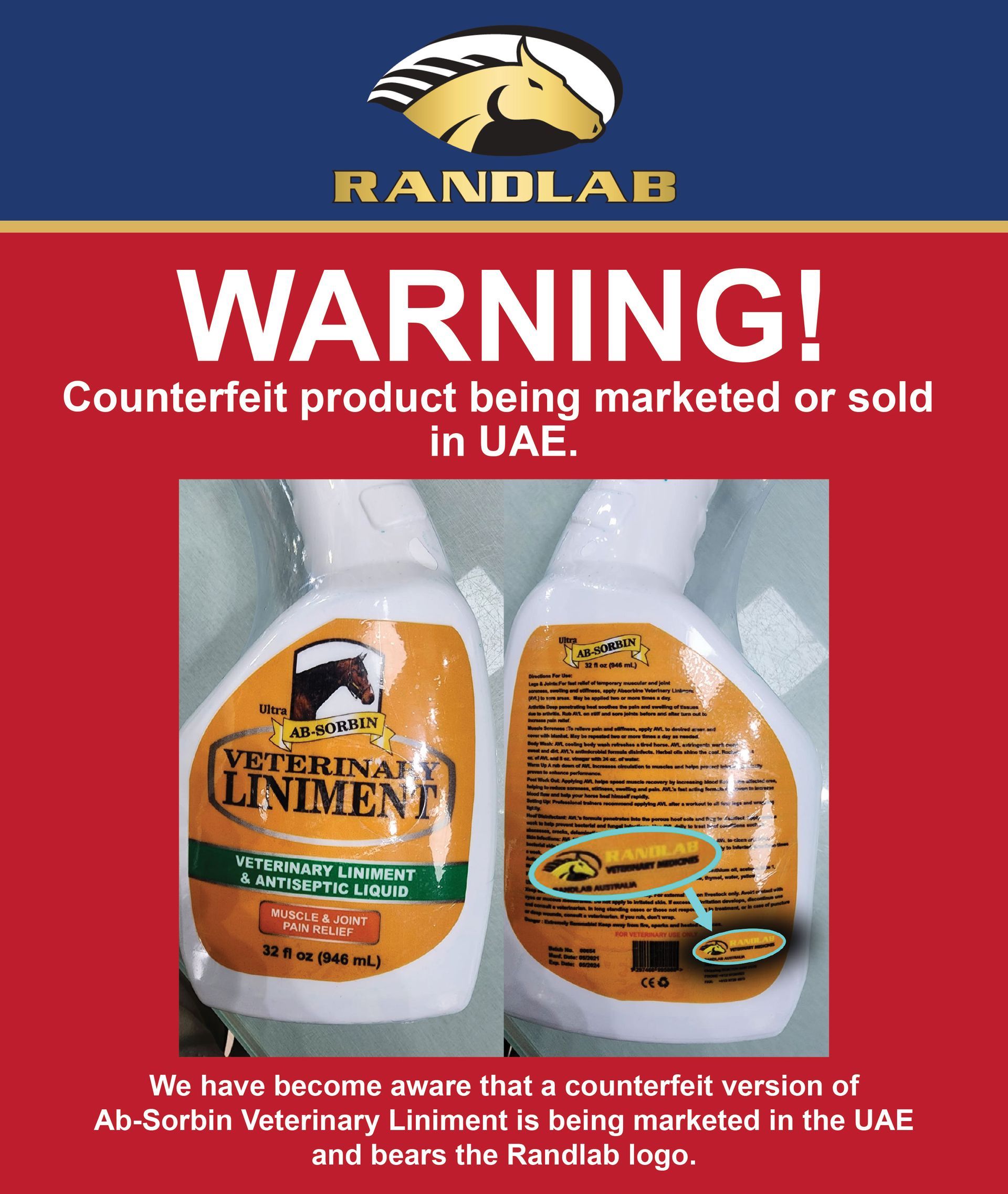By Website Editor
•
February 23, 2022
Hit TV cowboy drama Yellowstone has certainly brought reining into the lounge rooms of would-be cowboys and horse enthusiasts throughout the world. But for Wyong (NSW) veterinarian Dr Rob Caska , reining is more than just a weekly dose of the addictive series. It has been his passion since he first hopped on a reining horse four years ago. Rob, a senior associate at the Wyong Equine Clinic , grew up locally on the Central Coast of NSW where he progressed from Pony Club to eventing. He had always had Quarter Horses and previously dabbled in western disciplines such as western pleasure and halter classes. Rob jumped at the opportunity to try a client friend’s reiner about four years ago and that, as they say, was that. “I got hooked straight away. It’s very addictive”. “But it is a lot more difficult than I thought it was going to be. You need to gel with a particular horse. They are almost like border collies. Anticipating every move. They come out in the middle and are waiting for the next command. The slightest leg pressure can literally send them into a spin. And it is all done on a loose rein and normally one-handed.” Reining is sort of like dressage for western horses and is performed almost exclusively on custom-bred quarter horses . The primary international governing body is the US National Reining Horse Association (NRHA) whose guidelines for reining state that: “To rein a horse is not only to guide him, but also to control his every movement. The best reined horse should be willingly guided or controlled with little or no apparent resistance and dictated to completely.” Rob continued, “Most riders can go out and do a 1A dressage test and most reiners would fumble their way through a dressage test. But the converse does not hold. Dressage horses and riders could not do a reining pattern. They can’t do the sliding stops, they are not going to spin like they are meant to spin and you won’t be able to control them one-handed. You can pick up contact on a reiner but you can’t throw the reins away at a dressage horse.“ "Like everything, the good riders make it look easy. You are lulled into a false sense of security. But it is a lot more difficult than it looks and takes years of training. I used to think that I would be spinning and sliding within weeks, but it has taken years. Many riders give up because of the hours of training required. They get demoralised with their low scores and end up switching to cow-horse." "I have competed in a number of other disciplines in the past, but reining is a real adrenalin rush! It is sort of like the adrenalin of cross-country and show jumping combined with the technical complexity of high-level dressage. It is about having a horse that you guide one-handed. It requires a lot of attention to detail. I enjoy the adrenalin, but for me, the most important thing is the connection with the horse." Rob currently has one competition mare, a 9yo QH called ‘Mondure Lil Calgirl’, whom he purchased from the Mondure Quarter Horse Stud in Queensland and has been competing for about three years. “I even managed to make it to the Queensland State Reining Championships last year”. Rob did an embryo transfer on the mare the first year he got her and now has a two-year-old (by Shiners Voodoo Dr) that has been sent to legendary trainer Warren Backhouse to commence her education. “Unlike other disciplines, training takes 2-3 years”. "We had another exciting filly born this year through ET at Central West Equine by Inferno 66 . This foal lopes around the paddock and as it slows down she wants to slide. She naturally wants to slideback and turn. These horses are so purpose bred these days. They are just bred to do it. That I find remarkable. But probably not surprising, given we see similar cadence characteristics in dressage foals with no training. “For me the reining season kicks off in early January. Usually with a weeklong clinic with Warren Backhouse. Warren and his wife Carol are the gurus on the Australian reining circuit. They win the major Futurities every year. I train five days per week during comp season. The season finishes at the end of August, allowing me to be back home on Central Coast by 1st September for the breeding season." Rob balances his competition life with his busy work schedule and seven-year-old twins Elken & Mila who are both horse addicts and compete regularly on the show circuit. They are already beginning to show interest in reining. “My mare will go on to one of the kids.” [Parental tip: better clone her Rob!!]. The twins' regular show commitments means that Rob does not get to compete as often as he would like. He is looking forward to the forthcoming Reining Australia Nationals in June at AELEC (Tamworth). It will be the first time they have been held in two years due to Covid and consequently there will be record prizemoney on offer. " Yellowstone has certainly put reining on the map. It is massive. Even my dressage clients are now asking me for the videos of my spins and slides and take an interest in when I am competing." Hey Rob, why do all reiner riders look so straight-faced when they are competing? "I've never really thought about it. I guess they are so focused in that moment and on setting up for the next move. It takes a lot of concentration. Everything happens so fast and the horse cues are so light".
